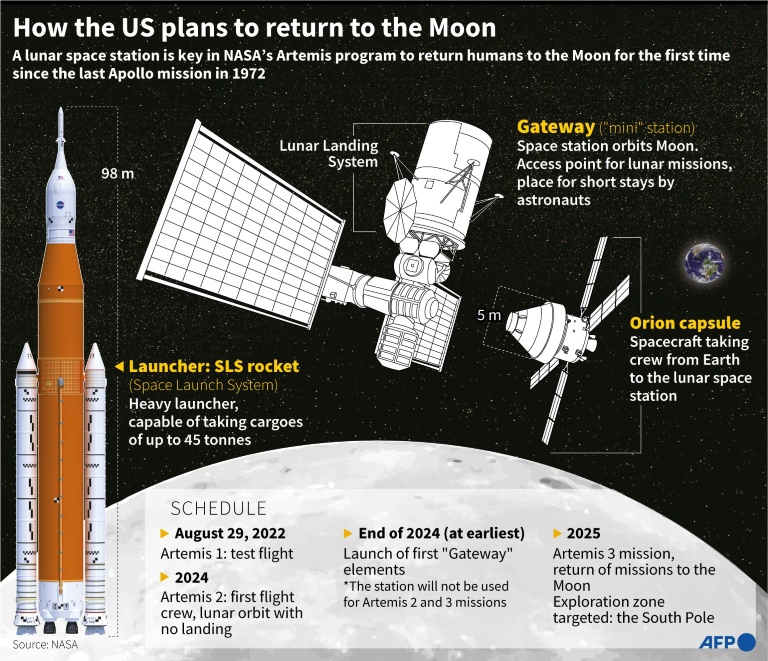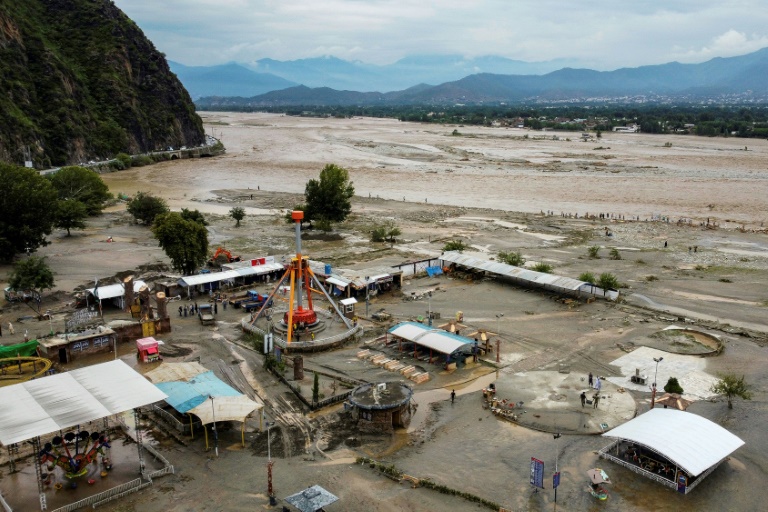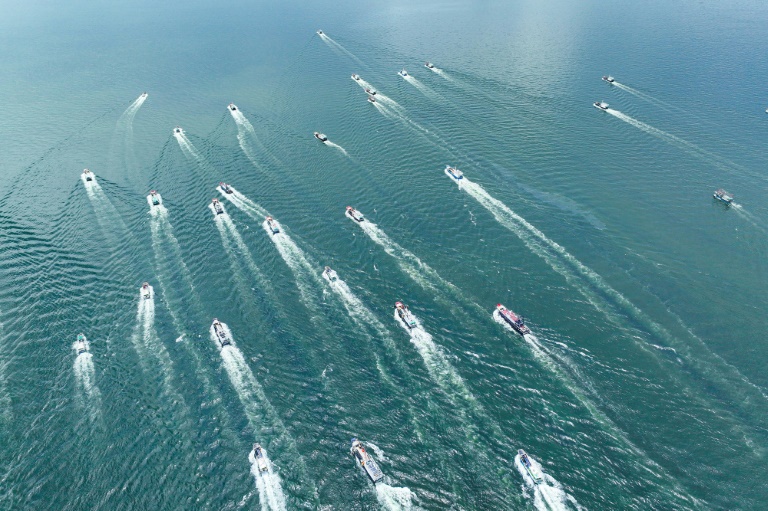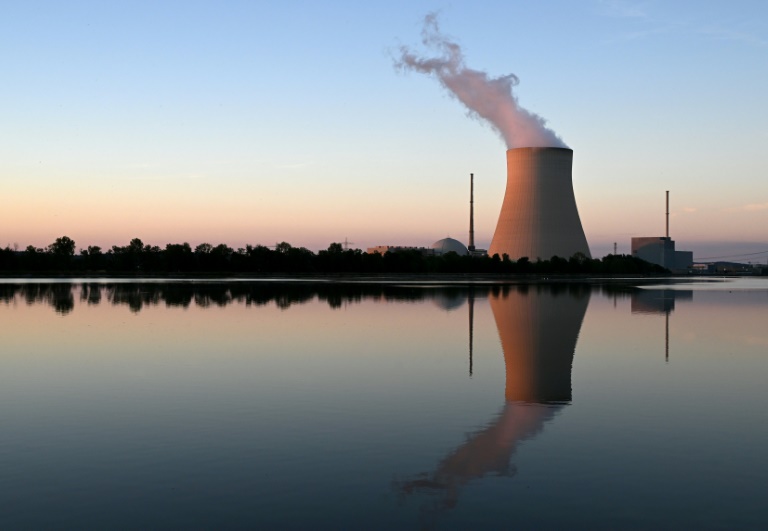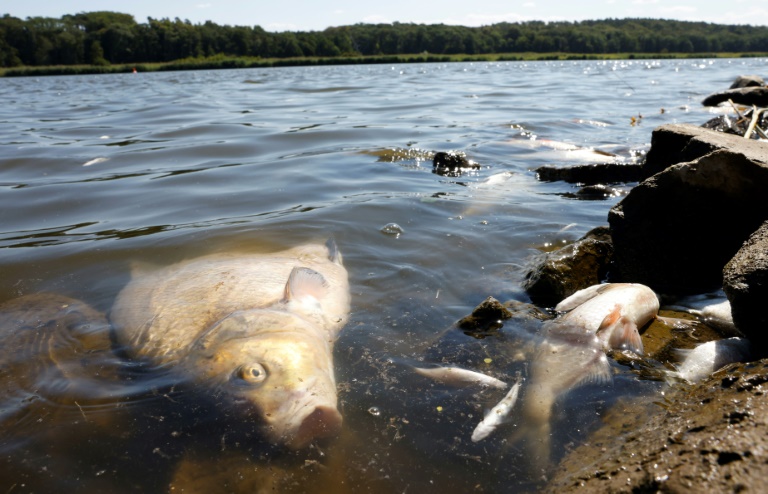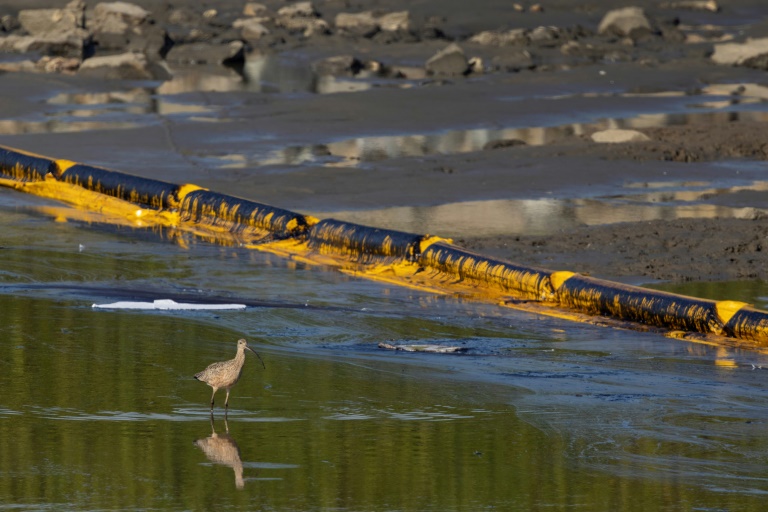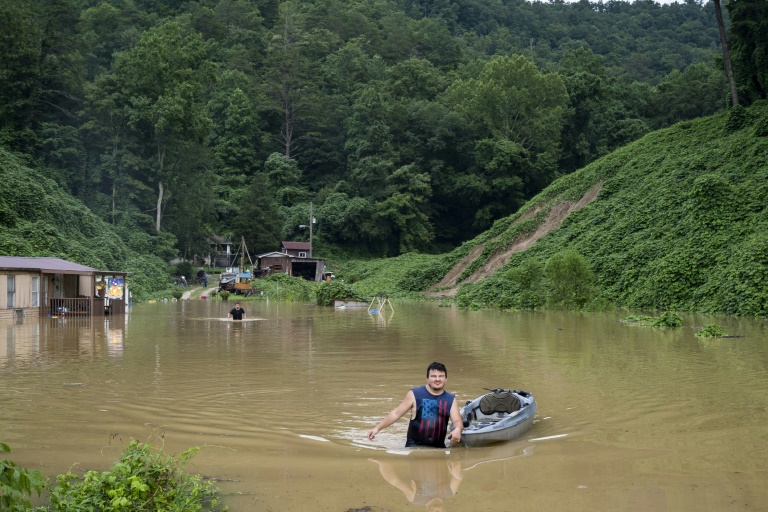'Sight to behold': tourists flock to Florida for Moon rocket launch
Tourists at a space t-shirt store shop near the Kennedy Space Center in Florida, August 27, 2022
Seeing a rocket blast off to the Moon is “a once-in-a-lifetime thing to experience,” says Joanne Bostandji.
The 45-year-old has traveled all the way from northern England to Florida with her husband and two children for a space-themed vacation, and they’re prepared to make sure they don’t miss a second of the action as NASA’s newest and most powerful rocket is scheduled to launch for the first time Monday.
“The plan is to drive very early in the morning and get a spot” on Cocoa Beach, she said, not far from the Kennedy Space Center.
“I know it’s going be from a far distance, but I still think it’s going be a sight to behold,” Bostandji told AFP as the family waited to enter a park dedicated to space exploration.
Between 100,000 and 200,000 visitors are expected to attend the launch of the mission, called Artemis 1, which will propel an empty capsule to the Moon as part of a test for future crewed flights.
The “historic nature” of Monday’s flight, the first of several as the United States returns to the Moon, “certainly has increased public interest,” Meagan Happel of Florida’s Space Coast Office of Tourism told AFP.
Traffic jams are expected to start by 4 am, with the launch scheduled at 8:33 am (1233 GMT).
And even more people might show up if the launch faces a weather delay, as the make-up date falls on a weekend.
– Space cruise –
Sabrina Morley was able to find an apartment to rent not far from the beach, and plans to bring her two children and a few dozen other people on a boat chartered for the occasion by a company called Star Fleet Tours.
For $95 a ticket, “we’ll go out into the ocean as close as they can get to the launch and we’ll watch the launch from the boat,” she said
“I’ve never been this close to a launch before,” said the 43-year-old, who grew up in Orlando, less than an hour away.
As a child, she could see space shuttles taking off from her backyard, like “an orange ball of smoke” rising into the sky.
“We would hear the sonic booms,” she remembered.
Morley likes that NASA’s Artemis program aims to land a woman on the Moon for the first time, with a crew to head up in 2025 at the earliest.
“Representation matters,” she said, glancing at her two-year-old daughter, who is already wearing an imitation astronaut helmet on her head.
– Good for business –
The return of prestigious space launches is an economic boon for the region. A family of three will spend an average of $1,300 over four or five days, according to the tourism office.
On the main road to Merritt Island, the peninsula where the Kennedy Space Center is located, Brenda Mulberry’s space memorabilia shop is packed with tourists.
As soon as they enter, visitors are greeted with Artemis T-shirts for sale, printed in-house — there were 1,000 copies made Saturday alone.
The last few days has seen an influx of customers, Mulberry, who founded “Space Shirts” in 1984, told AFP.
“They’re just excited I think to see a NASA launch because the private space business is not so motivating to the people,” she said.
This rocket, called the SLS — a large model of which is displayed in front of her shop — “belongs to the people,” Mulberry said.
“It’s their rocket. It’s not SpaceX rocket,” she added.
There is an air of nostalgia for the Apollo rocket program — it’s been 50 years since the last time a crewed mission went to the Moon, in 1972.
“My family, they had to go to the neighbor’s house to watch (the Apollo missions) because they didn’t have a television,” Bostandji, who was not yet born, said.
“Now we’re going to see it hopefully for real.”


